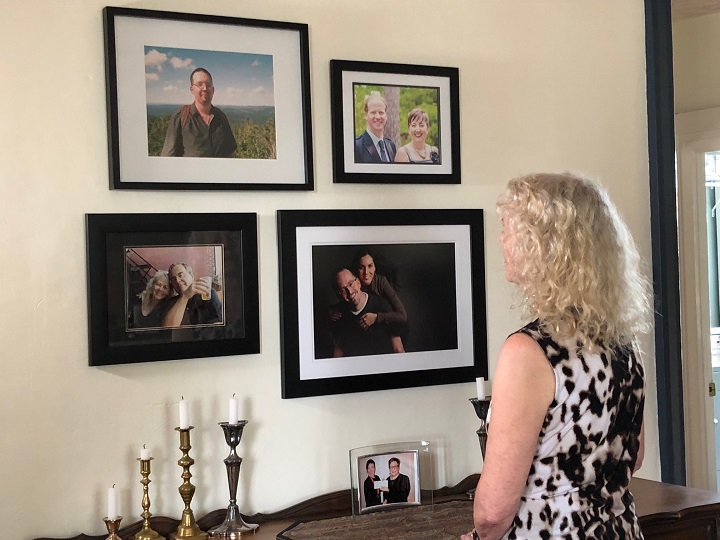Anya Humphrey’s century old home is filled with countless happy family memories.

“He was a natural born photographer,” she said as she pointed to a wall of photographs taken by her husband. “He took photos wherever we went.”
In the kitchen doorway there is a weathered doorframe leading out the back.
On it you can see pencil and pen marks indicating her children’s heights over time.
Her son Ted was by far the tallest.
“He just shot up past everyone,” Anya said with a proud mother’s smile.
But there are also dark moments that have left permanent marks.
Anya’s husband Fred died from colon cancer 10 years ago.
Four years later, her son Ted died from testicular cancer.
For Fred, palliative care was not presented as an early option.
“Medical people knew for two years that Fred was dying,” Anya said.
- Officials stress Calgarians must save water after Bearspaw main break sees no drop in usage
- Yukon-Alaska border rocked by 3 earthquakes in final hours of 2025
- Snowmobiler dies in avalanche in Rocky Mountains in northeastern B.C.
- Canadians ring in 2026 with ‘invigorating’ polar plunges across the country
“But I think they believed that you need to keep people’s hopes up. So the constant refrain was ‘there’s always something in the cupboard.’ But of course the things in the cupboard ran out,” she said.
Anya does believe that during both cancer battles her family got great care.
But with her husband, inconsistencies crept in during the final weeks of life when he started to get palliative care at home.
“They told us that the vast majority deaths are peaceful and they would be here to support us through that process,” she said. “But as it turned out Fred’s death was not peaceful and they were not here to support us and that was simply awful.”

Get weekly health news
“We were told that a person on the team would be our resource person and anytime we needed anything we were to call her. So when there was a pain crisis I called her and she didn’t have any idea how to manage that, her suggestions didn’t work. Ultimately we were 36 hours without any pain control for my husband at all,” she said.
Palliative care is designed to help people with pain or emotional suffering who have a life-limiting illness like cancer or dementia.
Anya said in Ontario the system is fractured.
That claim is backed up by a new study released on Wednesday by the Canadian Institute for Health Information (CIHI).
“We should introduce palliative care at the same moment that you get a diagnosis for a life-threatening illness,” said Tracy Johnson, Director of Health System Analysis and Emerging issues at CIHI.
“But what we know is that most people don’t get it until most of the curative treatment is finished,” she said.
New numbers indicate only 15 per cent of Canadians have early access to palliative home care.
The study suggests upwards of 89 per cent would have benefited from help sooner on.
But currently, most people are only designated as palliative in the last 30 days of life.
There are several challenges with the system the study found.
Cancer patients are three times more likely to get help than people who have other conditions.
People living in rural areas tend to have better access than those living in cities.
Another issue is that physicians don’t get a lot of mandatory training in the area, and public funding is also limited.
To complicate things further, it’s also unclear what services a patient is entitled to.
“Without that we also can’t tell specifically what people are receiving across the country and if it’s the same kind of care,” Johnson said.
The hope is that this study will help provinces better predict the types of services that are needed, reduce visits to emergency departments, and give families like Anya’s more comfort during hard times.
“When someone you love is dying at home, or anywhere else really, those are your last memories,” Anya said.
“You want to do the very best for them that you can, and when that isn’t possible it’s pretty hard to live with that.”















Comments